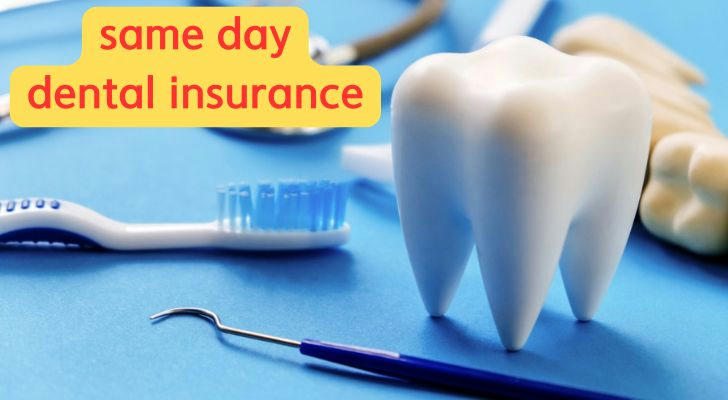Guide to Dental Insurance: How to Compare and Choose the Right Plan
Looking for dental insurance? Compare different options to find the best coverage for your needs. Explore affordable plans that offer comprehensive care, from routine check-ups to major dental procedures, and make an informed decision for your oral health.

Understanding the Basics of Dental Insurance
When exploring dental insurance options, it’s important to first understand what dental insurance typically covers and how it works. Dental insurance is designed to help individuals and families manage the costs of preventive care, basic procedures, and more complex dental treatments. Most plans are structured with a combination of premiums, deductibles, copayments, and annual maximums. Understanding these elements helps you estimate the real cost of a plan over time.
Dental insurance plans are usually categorized into the following types:
- Dental Health Maintenance Organization (DHMO) plans
- Preferred Provider Organization (PPO) plans
- Indemnity or Fee-for-Service plans
- Discount or Dental Savings plans
Each plan type has its own advantages and limitations. For example, DHMO plans often have lower premiums but require you to see dentists within a specific network. PPOs offer more flexibility in choosing providers but may come with higher out-of-pocket costs. Identifying your priorities—whether it’s cost, flexibility, or provider access—can guide your selection process.
Comparing Coverage and Benefits
Not all dental insurance plans are created equal when it comes to coverage. Some focus more on preventive care, while others provide more comprehensive support for restorative and orthodontic services. When comparing plans, look closely at what services are included and at what percentage they are covered.
Key areas to review include:
- Preventive care (cleanings, exams, X-rays)
- Basic procedures (fillings, extractions)
- Major procedures (crowns, bridges, dentures)
- Orthodontic services (braces, aligners)
It’s also essential to check waiting periods for certain services, as some plans require you to be enrolled for a specific time before coverage kicks in for more expensive treatments. Additionally, consider the annual maximum benefit limit, which caps the total amount the insurer will pay in a year. If you anticipate needing significant dental work, a higher annual maximum may be more suitable.
Evaluating Costs Beyond Premiums
While monthly premiums are often the first cost people consider, they are only one part of the financial picture. Deductibles, copayments, and coinsurance all contribute to your total out-of-pocket expenses. A plan with a lower premium might end up costing more if it has high deductibles or limited coverage.
Here are some cost factors to evaluate:
- Monthly premium
- Annual deductible
- Copayments and coinsurance levels
- Annual maximum coverage limit
- Out-of-network charges
Make sure to calculate the potential total cost over a year, especially if you or your family members expect to need dental work. Comparing sample cost scenarios for common procedures like fillings or root canals under different plans can help you better understand the value each option provides.
Checking Network Access and Provider Choice
The network of participating dentists can significantly impact your satisfaction with a dental insurance plan. Some plans restrict you to a specific list of providers, while others offer broader access. It’s important to verify whether your preferred dentist is part of the plan’s network or whether you’re open to switching to a new provider.
Consider these aspects when evaluating network access:
- Size and distribution of the provider network
- Availability of specialists within the network
- Out-of-network coverage terms
- Ease of getting appointments and referrals
Plans with larger networks may offer more convenience and choice, especially if you have specific dental care needs. On the other hand, if you’re comfortable with a limited selection and want to reduce your monthly premium, a smaller network might be acceptable.
Finding a Plan That Matches Your Needs
Ultimately, the right dental insurance plan should reflect your individual or family dental care needs, budget, and preferences. If you generally only need routine cleanings and exams, a basic plan with low premiums and preventive care coverage might suffice. For families or individuals with more extensive dental needs, a plan with broader coverage and a higher annual maximum may be more appropriate.
When comparing dental insurance options, ask yourself:
- How often do I visit the dentist, and for what types of services?
- Do I have any anticipated dental procedures in the next year?
- Is my current dentist in-network with this plan?
- What is my monthly and annual budget for dental expenses?
Use online comparison tools, read reviews, and consider speaking with a licensed insurance agent who can guide you through the options. Taking a thoughtful approach to evaluating dental insurance plans can help you avoid unexpected costs and ensure you receive the care you need when you need it.
Conclusion: Make an Informed Choice for Your Oral Health
Choosing dental insurance doesn’t have to be overwhelming. By understanding the different types of plans, comparing coverage details and costs, evaluating provider networks, and aligning your selection with your specific needs, you can make a confident and informed decision. Whether you’re seeking basic preventive care or anticipating more involved procedures, taking the time to compare options can lead to better oral health outcomes and more manageable expenses. Remember, the right dental insurance plan is the one that offers the support you need at a cost that fits your budget.
